The best Nikon Z lenses in 2025: the top buys for your Nikon Z-series mirrorless
Here's our pick of Nikon's best-buy Z-mount lenses for the Nikon Z5, Z6, Z6 II, Z6 III, Z7, Z7 II, Z8, Z9, Zf, Z50, Z50 II, Z30 and Z fc
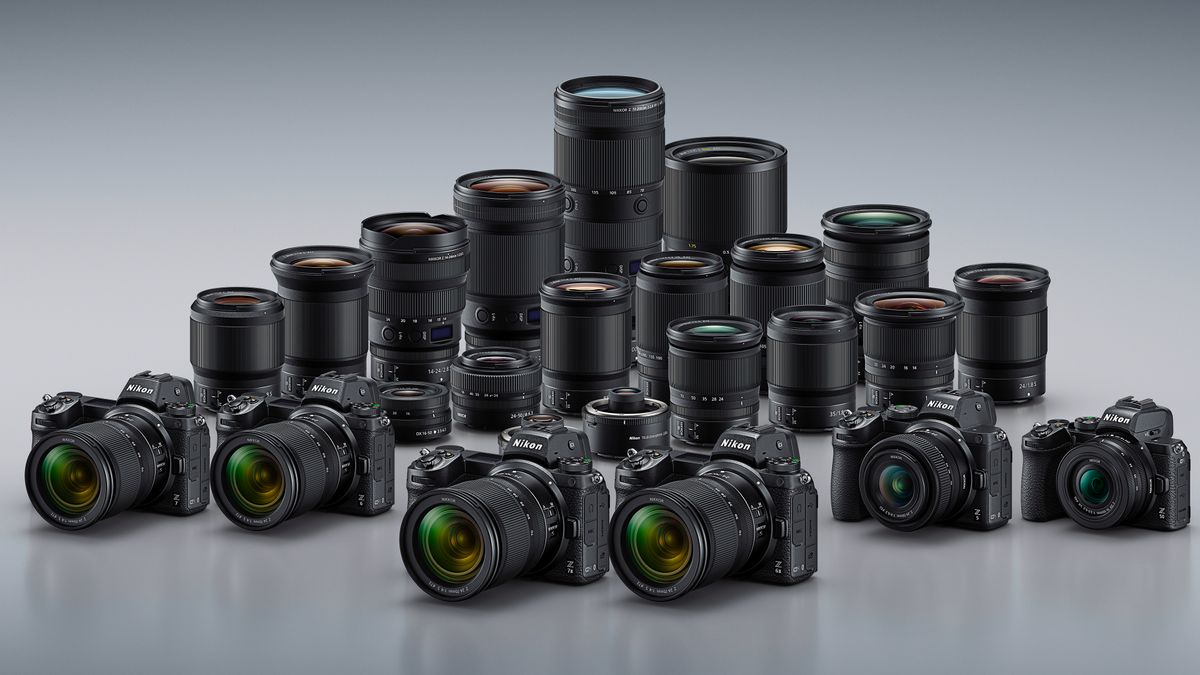
When Nikon created the Z-mount for its Z-series mirrorless camera range it opened up a whole new world of possibilities for its lens designers. The Z mount boasts a significantly larger lens flange than the F-mount used by the best Nikon DSLRs, while the absence of a mirror assembly in Z cameras allows the lens to be positioned much closer to the sensor than a DSLR. This design enables the creation of smaller, lighter, faster, and optically superior lenses. In fact, one of the key reasons Nikon Z mirrorless models are the best Nikon cameras is their exceptional and continually improving lens range.
Nikon had to start building its Z lens range from scratch when it launched the Z-series system in 2018, but now it has a comprehensive range that covers most of the bases, whatever you might shoot. The selection of the Nikon Z lenses continues to expand, covering every focal length that photographers and videographers might need.
As each new Nikon Z-fit lens has come into our labs for review, it has become apparent that Nikon's pushing of the virtues of the Z-mount's capabilities is no marketing hyperbole. There's not been a dud among them, and even the cheapest kit lens boasts optical quality that's off the charts compared to its F-mount forebears.
With such a variety available, choosing the right Nikon Z lens can be daunting. This gave me a bit of a headache too, when deciding on the best Nikon lenses for inclusion in this guide, because they all have a fair shout at being in the running. So I've zeroed in on what I reckon are the best buys that hit the quality and value sweet spot. They are the lenses that I would personally buy, and are not always the budget option: sometimes it's worth spending the extra.
But of course, different photographers will have different needs, and a Z8 or Z9 user will undoubtedly be prepared to spend more on a lens than an owner of an entry-level camera, such as a Z50 II or Z5, so also see our guides to the following Nikon cameras!

Adam is Guides Editor at Digital Camera World, and has several years of experience as a photography journalist, most notably as editor of Nikon bible N-Photo magazine. An undisputed Nikon know-all, he has put his unrivaled knowledge into practice, testing and reviewing Nikon lenses for this guide.
The Quick List

Best everyday zoom
A whole stop faster than the Z 24-70mm f/4 S kit lens, this goes a little longer at the telephoto end but isn't quite as generous at the wide end.
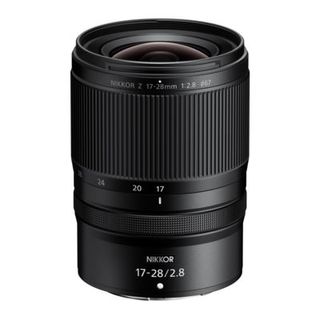
Best wide zoom
The Nikon Z 17-28mm is a beautiful compromise to creating a fast wide-angle zoom – by providing a lens with less wide-angle range than the more traditional 14-24mm f/2.8
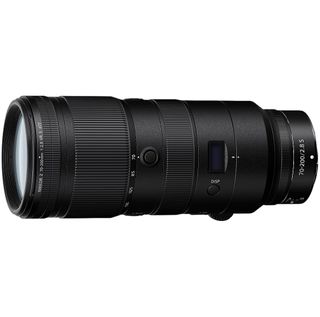
Best workhorse lens
Nikon’s top quality f/2.8 telephoto zoom for its full-frame mirrorless cameras sets new standards for image quality and all-around performance.
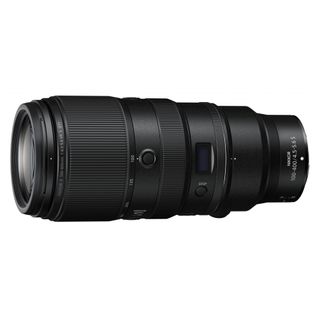
Best for wildlife
The Z 100-400mm VR S super-telephoto zoom is the best option for motorsports and wildlife, without spending silly money.
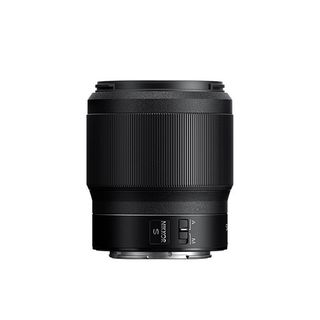
Best nifty fifty
A high-end nifty fifty with the S-Line designation, this prime lens provides a naturalistic perspective that's great for street and documentary shooting.
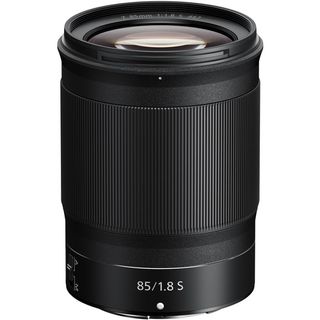
Best for portraits
This 85mm is a relatively affordable route into portraiture. It may be f/1.8 rather than f/1.4, but it still produces images with brilliant bokeh in defocused areas.
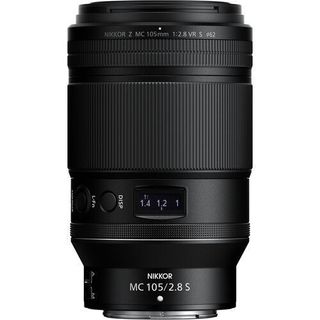
Best for macro and closeups
If you're looking to shoot close-up and macro images, we wholeheartedly recommend this 105mm prime. Its image quality is simply sublime.
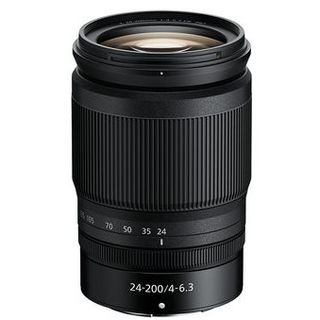
Best superzoom
This superzoom lens doesn’t go overly large in telephoto reach but there’s plenty of wide-angle scope. More importantly, image quality is excellent.

Best kit lens
The dinky 16-50mm for DX sensor Nikons is a marvel, packing a 24-75mm equivalent zoom range into a super-slim optic that nevertheless contains 4.5-stop vibration reduction.
Best Nikon Z lenses
Why you can trust Digital Camera World
Best everyday zoom
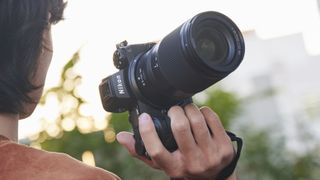
Specifications
Reasons to buy
Reasons to avoid
✅ You want a fast, affordable everyday lens: this is about half the price of Nikon's Z 24-70mm f/2.8, and sells for around the same as the slower Z 24-70mm f/4 S.
✅ You want the 'trinity' of lenses on a budget, this is the ideal accompaniment to Nikon's Z 17-28mm f/2.8 wide-angle and Z 70-180mm f/2.8 telephoto primes.
❌ You want to shoot wider: only reaching 28mm at the wide end might not seem like much difference, but 24mm squeezes a fair bit more into the frame.
❌ You want to shoot longer: while 75mm enables greater telephoto reach than most standard zooms, the Nikon 24-120mm f/4 goes even longer.
The Nikon Z 28-75mm f/2.8 has a slightly unusual focal range compared to the standard 24-70mm range in lenses such as the Nikon Z 24-70mm f/4 S kit lens, giving a little more telephoto reach but not as generous a wide-angle view. However, it's a whole stop faster, making it more comparable to the fully pro Nikon Z 24-70mm f/2.8 S, but costing around half the price.
It's small and light, and delivers excellent center sharpness (although the Z 24-70mm f/4 S is a little sharper in the corners). But for most of us, the 28-75mm strikes the ideal balance between performance and value, offering the fast f/2.8 constant aperture demanded by pros but at a price that the rest of us can afford.
It's also the ideal partner to Nikon's 'almost trinity' Z 17-28mm f/2.8 and Z 70-180mm f/2.8 lenses, and they all share the same 67mm filter thread, so you share filters between all three lenses.
Read our full Nikon Z 28-75mm f/2.8 review for more details
Best wide-angle zoom
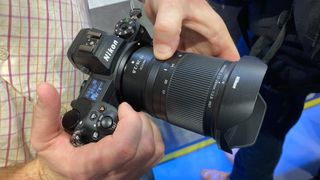
Specifications
Reasons to buy
Reasons to avoid
✅ You want an affordable option: priced lower than other f/2.8 zooms, making it a great budget-friendly option.
✅ You want in-body stabilization (IBIS) support: although it lacks optical VR, it takes full advantage of (IBIS) in full-frame Z cameras.
❌ You want an ultra-wide option, as the 17-28mm range is more limited at the wide end compared to traditional 14-24mm lenses.
❌ You want the absolute best: while it's a great compromise, those seeking the ultimate performance might prefer additional features.
Pro and enthusiast photographers aspire to owning zooms with fast, constant f/2.8 maximum apertures – but these come at a price and with bulk. The Nikon Z 17-28mm is a beautiful compromise to creating a fast wide-angle zoom – by providing a lens with less wide-angle range than the more traditional 14-28mm f/2.8, it has made a lens that is easier to carry and more affordable for users. As such it follows on from, and becomes the perfect partner to, the Nikon Z 28-75mm f/2.8 standard zoom.
The autofocus system is very snappy for stills, while also delivering smooth transitions for video capture, along with negligible focus breathing and virtually silent operation. There’s no optical VR (Vibration Reduction) but the lens takes full advantage of in-body stabilization, featured in all of Nikon’s full-frame Z system cameras.
Overall, this delivers excellent image quality and all-round performance – at a bargain price!
Read our full Nikon Z 17-28mm f/2.8 review for more details
Best workhorse telephoto zoom
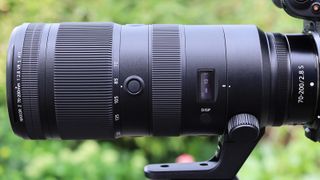
Specifications
Reasons to buy
Reasons to avoid
✅ You want razor-sharp across the entire image frame, even when shooting wide-open at f/2.8.
✅ You want fast and accurate autofocus: this is ideal for fast-paced shooting scenarios.
❌ You want a more affordable option: it comes with a high price tag, though its performance justifies it.
❌ You want a lightweight, portable lens, it's relatively heavy due to its robust build and high-quality components, making it less ideal for travel.
Nikon’s top quality f/2.8 telephoto zoom for its full-frame mirrorless cameras sets new standards for image quality and all-around performance. It’s a fabulous lens that delivers spectacular performance in every respect. The autofocus system is super-fast and unerringly accurate, while lens-shift VR delivers 5-stop effectiveness right out to the longest focal length.
Throughout most of the zoom range, levels of sharpness are absolutely stunning, right across the entire image frame and into the extreme corners, even when shooting wide-open at f/2.8. Of course, all this doesn't come cheap, but the price is certainly justified. But if you can't stretch to it, the Nikon Z 70-180mm f/2.8 makes for a reasonable budget alternative.
Read our full Nikon Z 70-200mm f/2.8 VR S review for more details
Best super-telephoto zoom
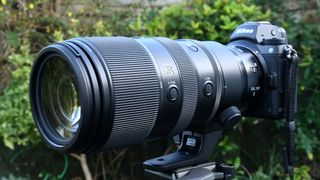
Specifications
Reasons to buy
Reasons to avoid
✅ You want a telephoto zoom with exceptional image quality that is ideal for wildlife and sports photography.
✅ You want highly effective vibration reduction; 5.5 stops of VR helps produce sharp images even at longer focal lengths.
❌ You want a compact lens: this is built for serious performance, which can be less convenient for casual shooting.
❌ You want a budget-friendly option: this lens comes with a hefty price tag.
It’s took a long while for Nikon to introduce super-telephoto lenses to its Z-series roster, and the first is still among the best for sports and wildlife fans. The Z 100-400mm VR S is a fabulous lens that combines rapid autofocus and highly effective 5.5-stop VR with superb image quality.
All-round performance is top-drawer, while handling is enhanced by customizable function buttons and an additional ‘de-clicked’ control ring, along with a multi-function OLED display. It’s a weighty lens with a hefty price tag, but a worthy Z-mount successor to the aging Nikon AF-S 80-400mm f/4.5-5.6G ED VR lens, launched back in 2013 with DSLRs in mind.
If you need extra reach, the Nikon Z 180-600mm f/5.6-6.3 VR could be a better option, and Nikon has a fairly extensive roster of super-tele primes, though the hefty prices put them in the reserve of the most deep-pocketed pros.
Read our full Nikon Z 100-400mm f/4.5-5.6 VR S review for more details
Best standard 'nifty fifty' prime
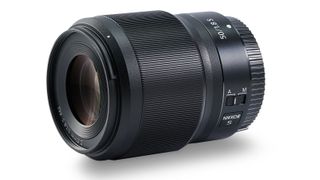
Specifications
Reasons to buy
Reasons to avoid
✅ You want excellent bokeh, as this lens produces remarkably smooth defocused areas, making it ideal for portraits and creative photography.
✅ You want a well-built lens with weather-sealed construction, providing durability and reliability in various shooting conditions.
❌ You want a faster aperture option, but the f/1.8 maximum aperture is modest compared to other 50mm lenses that offer f/1.4.
❌You want additional features or controls, but this lens may lack some advanced features found in higher-end models.
50mm f/1.8 lenses are often regarded as the poor relations of f/1.4 standard primes. But despite its modest aperture rating, this Z-mount lens delivers sumptuous image quality, with amazing levels of sharpness across the whole image frame and negligible distortion or color fringing.
The f/1.8 aperture also enables a reasonably compact and lightweight build, in keeping with slim-line mirrorless camera bodies. Even more impressively, the quality of the bokeh is remarkably good for a 50mm f/1.8 lens, with a particularly smooth rendition of defocused areas. Autofocus is very fast and virtually silent, and the lens is well-built with a weather-sealed construction. It’s pretty pricey for a 50mm f/1.8 prime but well worth the money.
Read our full Nikon Z 50mm f/1.8 S review for more details
Best portrait prime
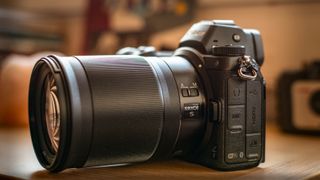
Specifications
Reasons to buy
Reasons to avoid
✅ You want an ideal focal length for portraiture, as the 85mm distance is perfect for capturing head-and-shoulders and half-length shots.
✅ You want a lightweight option, ensuring portability without sacrificing performance.
❌ You want a lens with built-in stabilization, but the absence of this feature means you may need to rely more on camera stabilization to avoid sharpness issues.
❌ You want a faster aperture option, as many photographers prefer 85mm f/1.4 lenses for their tighter depth of field and enhanced background blur.
Only a little larger and heavier than Nikon’s Z 50mm f/1.8 S lens, this 85mm optic is better suited to portraiture on full-frame cameras. The focal length is ideal for head-and-shoulders and half-length shots from a natural shooting distance. 85mm f/1.4 lenses are often preferred for their tighter depth of field, which can blur the background a little more effectively and make the main subject really stand out.
Based on our tests, however, the bokeh (pictorial quality of defocused areas) produced by this lens is easily on par with f/1.4 lenses, and better than some. As with other Z-mount f/1.8 S-line primes, the build quality is very good and features weather seals. A drawback of unstabilized 85mm telephoto lenses is that camera shake can degrade sharpness in handheld shooting, but the in-body stabilization of Nikon's full-frame Z-series cameras helps to deliver consistently sharp shots.
Read our full Nikkor Z 85mm f/1.8 S review for more details
Best macro lens
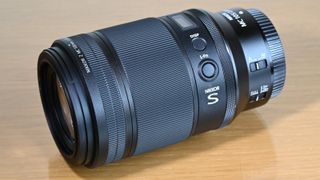
Specifications
Reasons to buy
Reasons to avoid
✅ You want ultra-fine focusing adjustments, thanks to the electronically coupled focus ring and autofocus range limiter.
✅ You want effective optical VR, which works in tandem with the IBIS of Nikon’s full-frame Z-series cameras.
❌ You want additional versatility, as some may find the 105mm focal length less suitable for wider applications beyond macro.
❌ You want a lower price point, as this lens is positioned as a premium offering.
The Nikon Z MC 105mm is something special. Sublime image quality for both general shooting and extreme close-ups is backed up by a super-fast and highly accurate autofocus system, along with highly effective optical VR (Vibration Reduction) that can work in tandem with the in-body stabilizers of Nikon’s full-frame Z-series cameras.
Handling exotica includes a multi-function OLED display, a customizable Lens-function button and control ring, plus an autofocus range limiter, along with an electronically coupled focus ring that enables ultra-fine adjustments. Everything’s wrapped up in a tough, weather-sealed construction. Image quality, all-round performance, and handling are simply sensational.
Read our full Nikon Z MC 105mm f/2.8 VR S review for more details
Best superzoom
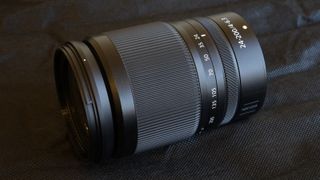
Specifications
Reasons to buy
Reasons to avoid
✅ You want a versatile lens that covers everything from wide-angle to telephoto in a single compact package, making it perfect for travel.
✅ You want effective image stabilization, with a 4.5-stop optical stabilizer that works alongside in-body stabilization on full-frame cameras
❌ You want a faster aperture, as the f/6.3 maximum aperture at the longest focal length may limit its performance in low-light situations.
❌ You want optimal wide-angle coverage on DX-format cameras, but you lose some wide-angle ability due to the crop factor on cameras like the Z50 II.
Ideal for the long or short haul, this ‘superzoom’ lens gives you everything from great wide-angle coverage to powerful telephoto reach, at the flick of a wrist. It’s impressively compact and lightweight for a full-frame compatible superzoom, measuring 114mm in length and tipping the scales at just 570g. That’s pretty remarkable, considering it can replace separate dual 24-70mm and 70-200mm zoom lenses, albeit with a more restrictive aperture rating of f/6.3 at the longest setting.
Travel-friendly credentials include weather seals and a fluorine coating on the front element to repel moisture and grease, as well as an anti-glare ARNEO Coat for when (or if) the sun comes out. It also boasts a 4.5-stop optical stabilizer which works in conjunction with the in-body stabilizers of full-frame Z-series cameras and is even more desirable DX-sensor cameras, which have no IBIS. On the latter, you gain in telephoto reach what you lose in wide-angle ability, the ‘effective’ zoom range equating to 36-300mm in full-frame terms.
Read our full Nikkor Z 24-200mm f/4-6.3 VR review for more details
Best kit lens
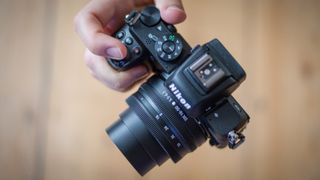
Specifications
Reasons to buy
Reasons to avoid
✅ You want a supremely portable ultra-compact lens, this weighs just 135g and measures only 32mm in length when retracted, making it ideal for travel.
✅ You want impressive image quality across the zoom range, with great sharpness and contrast even when shooting wide open.
❌ You want a wider aperture, as the maximum aperture of f/3.5-6.3 may limit low-light performance and depth of field control.
❌ You want top-build quality, as the lens does feel plasticky compared to other more upmarket Z-series lenses.
Tipping the scales at just 135g, this DX (APS-C) format standard zoom for DX-sensor Nikons pretty much qualifies as a ‘pancake lens’, measuring a mere 32mm in length when retracted. The flip side is that, compared with weightier FX (full-frame format) Z-mount lenses, it feels a bit less solid and has a plastic rather than a metal mounting plate.
Even so, it’s certainly robust enough for daily shooting. Like most similarly priced APS-C format cameras, the DX-sensor Nikons lack IBIS (In Body Image Stabilization) but the lens comes to the rescue with 4.5-stop optical VR (Vibration Reduction). Although small in size, it punches above its weight, delivering great sharpness and contrast even when shooting wide-open, which is just as well considering that the widest available aperture shrinks to f/.6.3 at the long end of the zoom range. A silver version of this lens is also available, to match the retro styling of the Nikon Z fc.
Read our full Nikon Z DX 16-50mm f/3.5-6.3 VR for more details
How to choose the best Nikon Z lenses
While there are many reasons to choose one lens over another, and some lenses are always going to be better than others, ultimately the choice of lens you make is going to be guided by what you plan to shoot. Whether you want a wide-angle, standard or telephoto lens, whether you pick a prime or a zoom – it should all be determined by what you want to use the lens for. You likely wouldn't use the same lens to photograph a skyscraper, a wild fox and a Ferrari.
Think about what you're planning to shoot, and how you're planning to shoot it. Want to capture big, sweeping vistas of landscapes and cities? A wide-angle lens will be perfect for filling the frame. Want to get naturalistic street shots and portraits? A standard lens (i.e. with a focal length around 24-70mm) will fit the bill. Looking to shoot sports, or capture images of elusive wildlife? A long-range telephoto will be a must.
You'll also need to weight up your budget. Lenses with wide maximum apertures, high-speed autofocus motors and built-in optical stabilization systems are great to have – but they also cost more.
How we test Nikon Z lenses
We test lenses using both real-world sample images and lab tests. Our lab tests are carried out scientifically in controlled conditions using the Imatest testing suite, which consists of custom charts and analysis software that measures resolution in line widths/picture height, a measurement widely used in lens and camera testing. We find the combination of lab and real-world testing works best, as each reveals different qualities and characteristics.
Nikon Z lenses: frequently asked questions
What are Nikon S-Line lenses?
This term denotes Nikon's top-end range of optically superior lenses. If you see an 'S' in a Nikon lens' name, that means it's part of the S-Line, and is designed to offer pin-sharp resolution, with (according to Nikon) 'superb point-image reproduction, even at the widest apertures'. They're designed to reproduce point light sources more accurately, and provide aesthetically pleasing bokeh characteristics. As such, they tend to be the more expensive members of the line-up.
Can you use Nikon Z lenses on DSLRS?
No. While it is possible to mount Nikon F-mount lenses to Z-mount mirrorless cameras, via the FTZ and FTZ II adapters, there is no way to do the reverse, due to the wider opening and reduced flange distance of the Z-mount system.
Are there third-party Nikon Z lenses?
Yes! While in this guide we've kept things to Nikon-made lenses only, there are third-party options for Nikon Z that are well worth checking out. Both Sigma and Tamron have released autofocus lenses for the system, and there are an increasing number of very capable and attractively priced lenses from upcoming manufacturers like 7artisans, TTartisans and Venus Optics (Laowa).
Read more:
Get the Digital Camera World Newsletter
The best camera deals, reviews, product advice, and unmissable photography news, direct to your inbox!

Prior to joining digitalcameraworld.com as Guides Editor, Adam was the editor of N-Photo: The Nikon Magazine for seven years, and as such is one of Digital Camera World's leading experts when it comes to all things Nikon-related.
Whether it’s reviews and hands-on tests of the latest Nikon cameras and lenses, sharing his skills using filters, tripods, lighting, L brackets and other photography equipment, or trading tips and techniques on shooting landscapes, wildlife and almost any genre of photography, Adam is always on hand to provide his insights.
Prior to his tenure on N-Photo, Adam was also a veteran of publications such as PhotoPlus: The Canon Magazine, so his wealth of photographic knowledge isn’t solely limited to the Big N.
- Rod LawtonContributor
- Matthew Richards